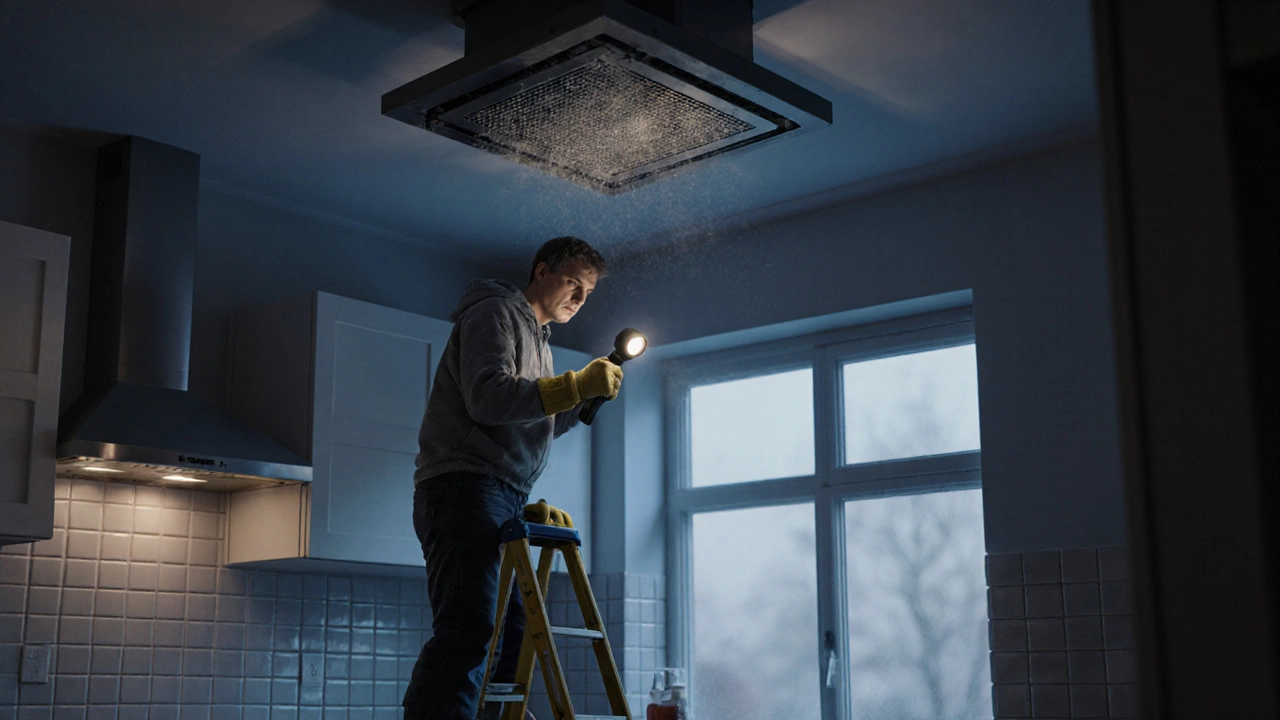Fan Repair: Quick Fixes and When to Call a Pro
If your kitchen extractor fan is humming weirdly or your ceiling fan stops spinning, you don’t have to panic. Most fan headaches have a straightforward solution that you can tackle in under an hour. In this guide we break down the usual culprits, walk you through safe DIY steps, and tell you exactly when it’s smarter to ring a professional.
Common Fan Problems and Easy DIY Fixes
First, identify the symptom. A fan that won’t turn on usually means a power issue – check the plug, circuit breaker, or switch. If the motor hums but the blades don’t move, the motor bearings or the blade coupler might be stuck.
Cleaning the blades is often enough. Dust builds up on the blades and the motor vent, causing overheating and stalling. Turn the fan off, remove the cover (most snap on), and wipe each blade with a damp cloth. Use a soft brush to clear the motor housing, then replace the cover and test.
Tightening loose screws can stop wobbling and noise. Over time the mounting screws loosen, letting the fan shake. Grab a screwdriver, tighten any visible screws on the fan housing, and re‑align the blades.
Lubricating the motor bearings works for ceiling fans that squeak or run slow. Most modern fans have sealed bearings, but older models let you add a few drops of light machine oil where the motor shaft meets the housing. Spin the blades by hand after oiling to spread it evenly.
If the fan still won’t run, reset the thermal overload. Many extractor fans have a reset button behind the grill; press it after the fan cools down for a few minutes.
When You Need a Professional Repair Service
Some issues are beyond a quick fix. Electrical problems like a burnt motor winding, recurring tripping of the breaker, or a burning smell mean the wiring or motor has failed. Trying to repair these yourself can be dangerous and may void warranties.
Another red flag is a fan that frequently stalls despite cleaning and lubrication. That usually points to a worn‑out motor or a broken internal gear, both of which need specialist tools and replacement parts.
At this stage, call a local repair service. Professionals can test the motor with a multimeter, order the correct spare parts, and guarantee the work. Look for a company that offers same‑day visits, transparent pricing, and a warranty on parts.
Keeping your fans in good shape also means regular maintenance. Set a reminder to clean the blades and vent every three months, and give the motor a quick spin check each year. A little upkeep now saves you from costly repairs later.
Whether you’re wiping dust off an extractor fan or deciding it’s time for a full motor replacement, the right approach saves time, money, and hassle. Use this guide as a checklist, give DIY a try where it’s safe, and don’t hesitate to call an expert when the problem looks electrical or severe.
Why Your Extractor Fan Stops Working - Common Causes & Fixes
0 Comments
Discover the most common reasons an extractor fan stops working, step‑by‑step troubleshooting tips, maintenance advice, and when to call a professional.
Read MoreExtractor Fan Motor Replacement: Can You Really Do It Yourself?
0 Comments
If your extractor fan starts making odd noises or just stops working, the problem could be the motor. Many people think they need to buy a whole new unit, but replacing the motor might be all it takes. This article breaks down whether you can tackle extractor fan motor replacement yourself or if it's better left to the pros. You'll learn signs of motor trouble, steps for replacement, and tips to avoid costly mistakes. We’ll also look at when it’s not worth fixing and what to expect cost-wise.
Read MoreEffective Methods to Ensure Your Extractor Fan is Functioning Well
0 Comments
An extractor fan plays a vital role in maintaining good air quality in a home by removing unwanted moisture, smoke, and odors. Regular checks are essential to ensure it operates smoothly and efficiently. This article explores ways to determine if your extractor fan is working properly, offers practical maintenance tips, and notes when professional help may be necessary. Learn how to maintain an optimal environment in your living spaces.
Read More

